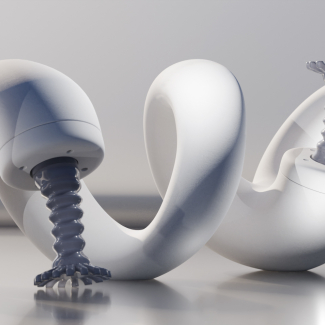
When painting reveals increases in social trust
Scientists from the CNRS, ENS-PSL, Inserm, and Sciences Po1 revealed an increase in facial displays of trustworthiness in European painting between the fourteenth and twenty-first centuries. The findings, published in Nature Communications on 22 September 2020, were obtained by applying face-processing software to two groups of portraits, suggesting an increase in trustworthiness in society that closely follows rising living standards over the course of this period.
In having their portraits drawn, the greats of this world have sought, depending on the period, to display their power and inspire fear, or on the contrary to display a trustworthy appearance. Using their sources, historians had already perceived a shift toward greater trustworthiness over time, although these changes were difficult to document quantitatively.
To follow the historical evolution of interpersonal trust, a team of cognitive science researchers from the CNRS, ENS-PSL, Inserm and Sciences Po has created a facial analysis algorithm that can reproduce human judgements regarding the trustworthiness displayed by a face. To validate the algorithm, the scientists initially tested it on photographs of faces whose trustworthiness had already been rated by humans. During other tests, the algorithm reproduced the conclusions drawn from the scientific literature regarding the impact that factors such as age, gender, facial features or the emotions displayed have on the trustworthiness of a face.
By analysing a collection of 1,962 English portraits painted between 1506 and 2016 from the National Portrait Gallery in London, the authors observed that the number of facial cues connected to interpersonal trust increased over time. They also successfully reproduced their conclusions on 4,106 portraits from the Web Gallery of Art, which includes works from nineteen Western European countries between the years 1360 and 1918.
However, does this evolution reflect the transition of relatively violent societies into more cooperative ones? To validate this hypothesis, the algorithm was then applied to Selfiecity, a database including 2,277 photographic self-portraits posted on social media in six cities across the globe. The trustworthiness of faces was indeed correlated to the interpersonal trust and cooperation previously measured through international surveys.
In seeking the potential causes of this evolution, the team observed that increased trustworthiness in the portraits was more closely associated to increased per capita GDP than to institutional changes such as the emergence of more democratic institutions. The scientists are continuing this study on the basis of other sources, such as literary texts and musical production.

Left: examples of faces detected in portraits from the National Portrait Gallery and estimated as lowly trustworthy (top; Thomas Cranmer by Gerlach Flicke, 1545-1546, NPG 535 All rights reserved © National Portrait Gallery, London) and highly trustworthy (bottom; Sir Matthew Wood by Arthur William Devis, 1815-1816, NPG 1481 All rights reserved © National Portrait Gallery).
Right: Evolution of displays of trustworthiness in the National Portrait Gallery (modeled trustworthiness value adjusted for dominance) and GDP per capita in England.
© National Portrait Gallery & Lou Safra et al., Nature Communications 2020
Tracking historical changes in trustworthiness using machine learning analyses of facial cues in painting, Lou Safra, Coralie Chevallier, Julie Grèzes & Nicolas Baumard, Nature Communications, 22 September 2020. DOI: 10.1038/s41467-020-18566-7.
Contact
Notes
- working at Institut Jean-Nicod (CNRS/ENS-PSL), Laboratoire de neurosciences cognitives et computationnelles (Inserm/ENS-PSL) and CEVIPOF - Centre de recherches politiques de Sciences Po (CNRS/Sciences Po).


